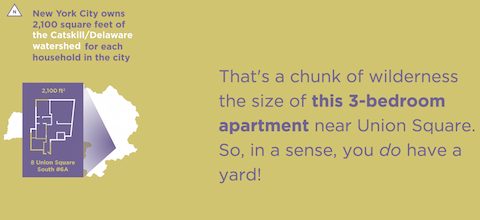It's unusual for New York City-based media outlets to pay much attention to the Catskills, and even more unusual for them to examine the long, often painful history of how exactly New Yorkers get their water, more than a billions gallons a day of it, from the Catskills watershed.
But this week, WNYC radio and a news website called CityLimits.org are diving deep into the story of the Catskills watershed in their week-long The Cost of Our Water collaborative investigative series. They're airing thoughtful radio pieces and publishing long articles about the sometimes fraught relationship between the NYC Department of Environmental Protection (DEP), which runs the vast system of reservoirs that dominates the Catskills, and upstate residents.
The multiple reporters and producers spent time in a number of Catskills towns. They went to a farm in Bovina and to wing night at Summerfields in Margaretville.
They quote a large array of Catskills locals, including Middletown supervisor Marge Miller, Delaware County Watershed Affairs Commissioner Dean Frazier and Alan White, the outgoing director of the Catskill Center.
One story charts the history of the watershed, from the building of the reservoirs, through the 1997 Memorandum of Agreement and on to Tropical Storm Irene.
There's even an infographic that illustrates the city's land aquisition program in the Catskills, which concludes that the city owns 2,100 square feet in the Catskills for each household in the city. "So, in a sense, you do have a yard," it says.

Above: A slide from an infographic from "The Cost of Our Water," a series from WNYC and CityLimits.org.
You know the reporters and producers have done their homework, because the terms "flatlander" and "woodchuck" both turn up in their coverage.
Marge Miller even gets in a characteristically colorful version of the common local threat to playfully contaminate the city's drinking water:
"I had this thought that we should just take all the used toilets from all throughout the county and line them up on the Shavertown Bridge at one point and say, 'We're going to crap in your water until you start paying attention to us,'" she says with another laugh.
This series is by far the most in-depth look at the Catskills watershed we've seen from a city media outlet. Or maybe any media outlet. Whether it will make New Yorkers more aware of where their water comes remains to be seen, but it's a great start. The whole thing is worth a listen and a read. Check it out here:
The Cost of Our Water, CityLimits.org















